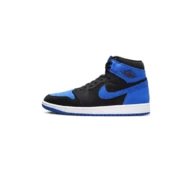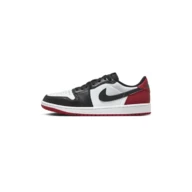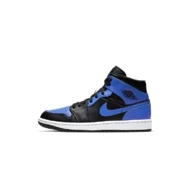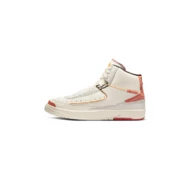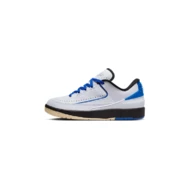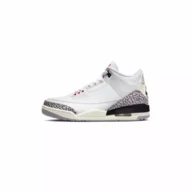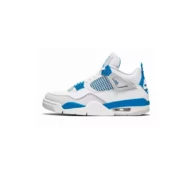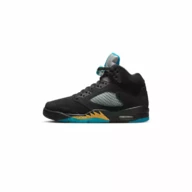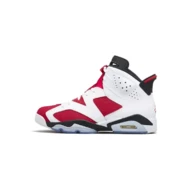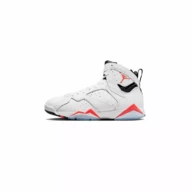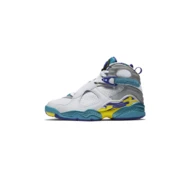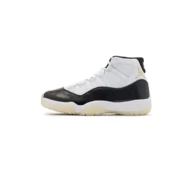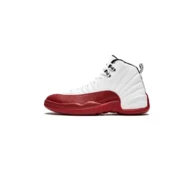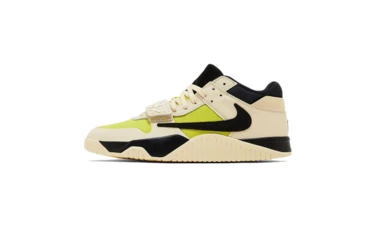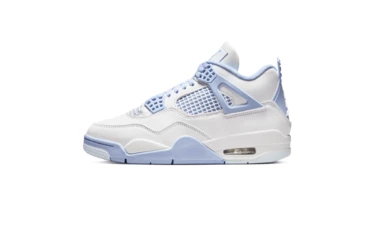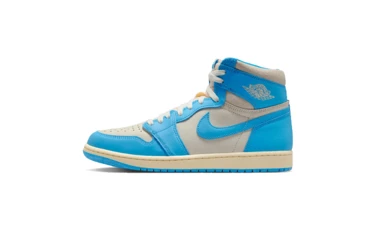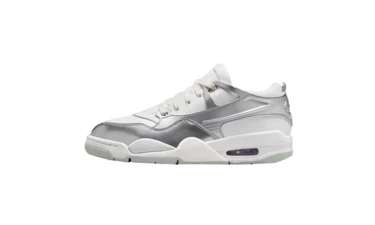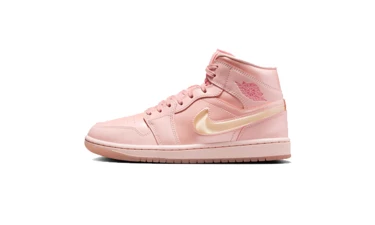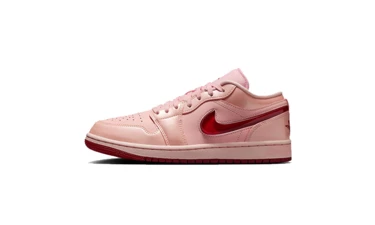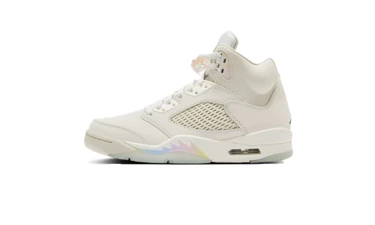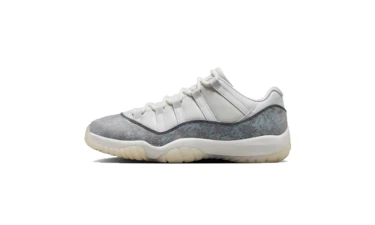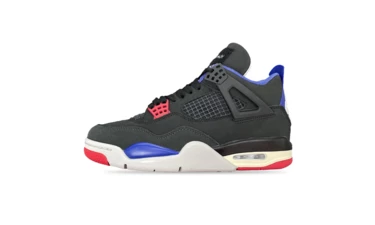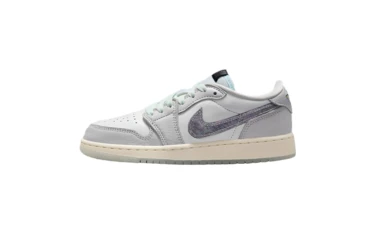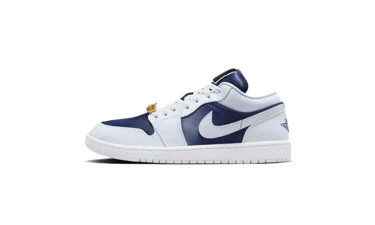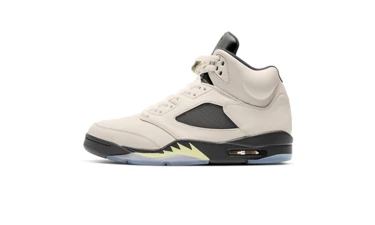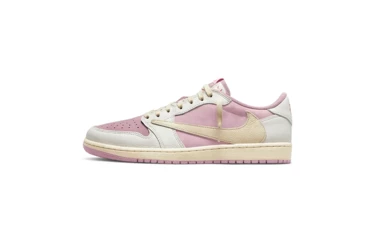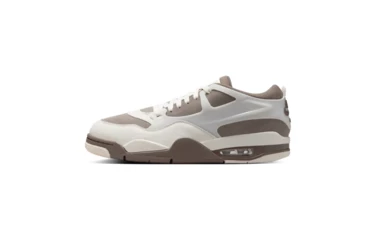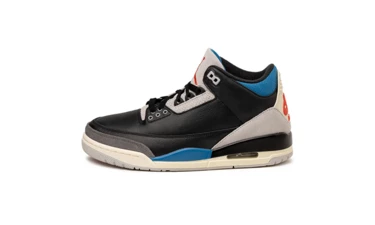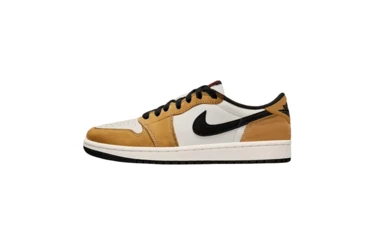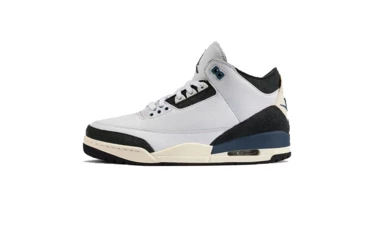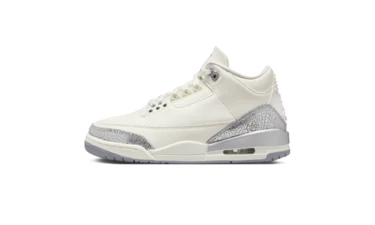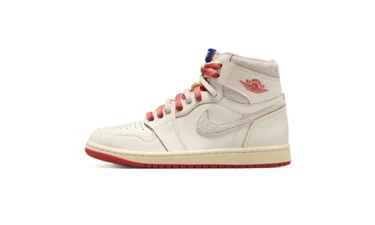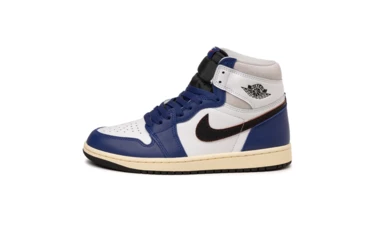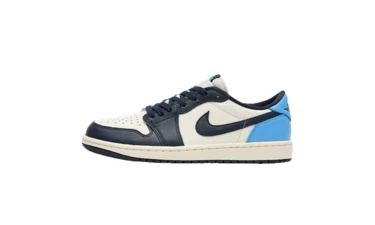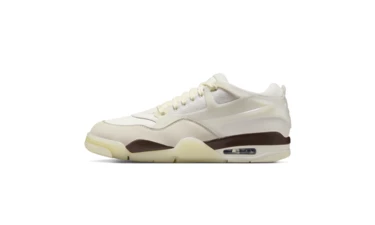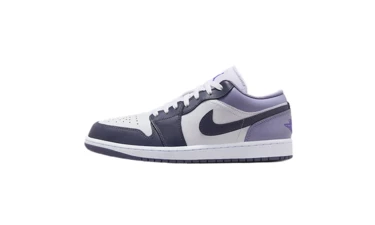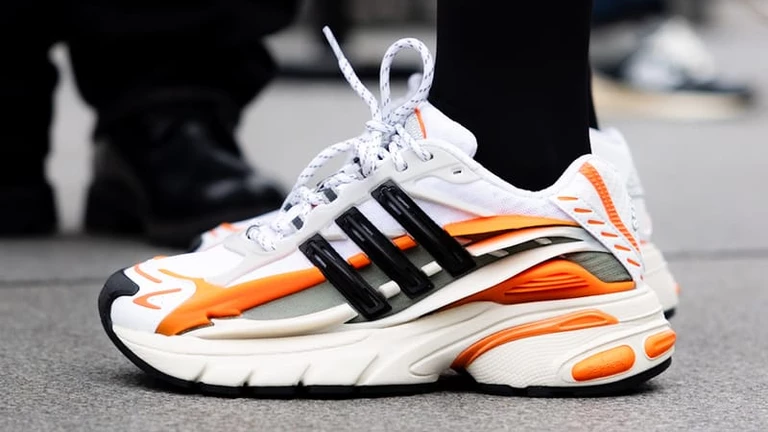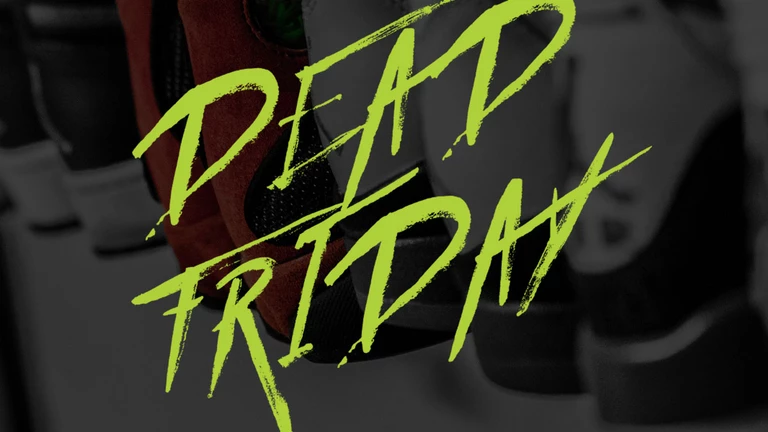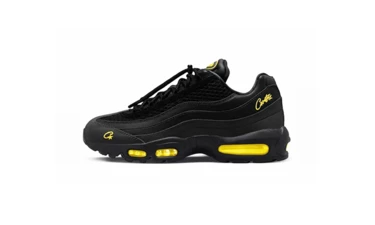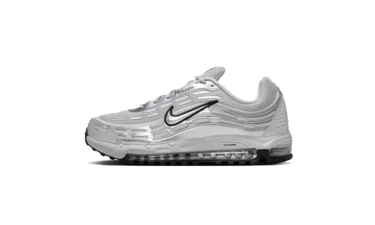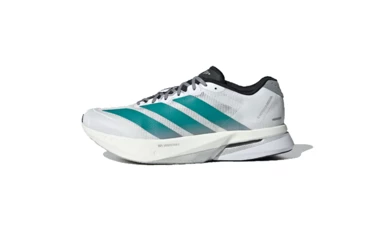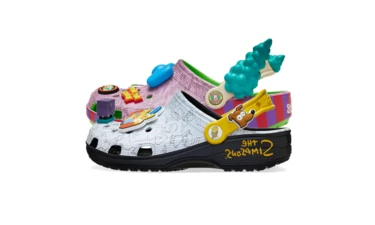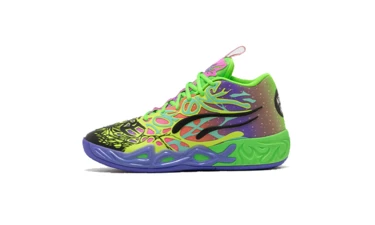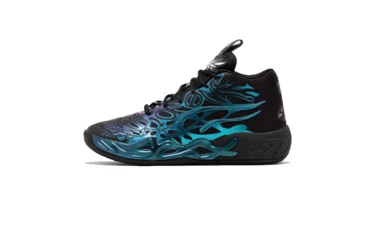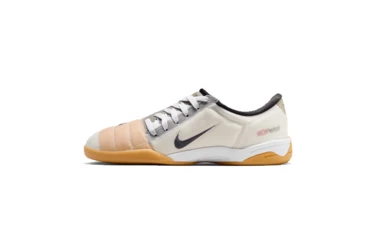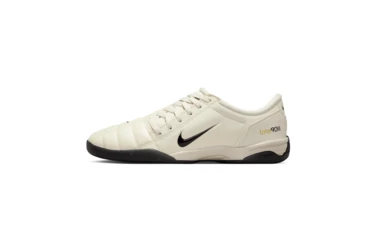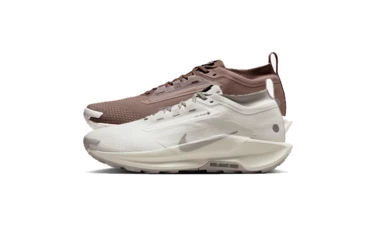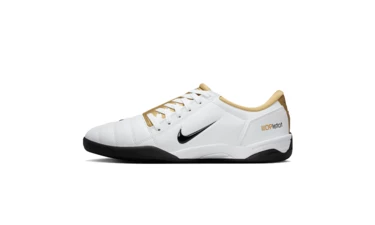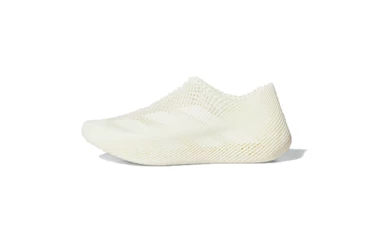

Air Jordan
In 1984, the still relatively unknown exceptional talent Michael Jordan switched from the college league to the NBA and started his career. At the same time, the sports brand Nike had only been selling in Europe for a few years and was struggling with declining sales. A short time later, the two parties founded the "Air Jordan" brand - laying the foundation for decades of very successful collaboration. Jordan was thus the first athlete to become a real brand and gave Nike the lead among sportswear brands - to this day.
Air Jordan Upcoming Releases 2
Check out all Air Jordan Upcoming Releases
See allAir Jordan Unconfirmed Releases 52
Check out all Air Jordan Unconfirmed Releases
See allAir Jordan Past Releases 589
Check out all Air Jordan Past Releases
See all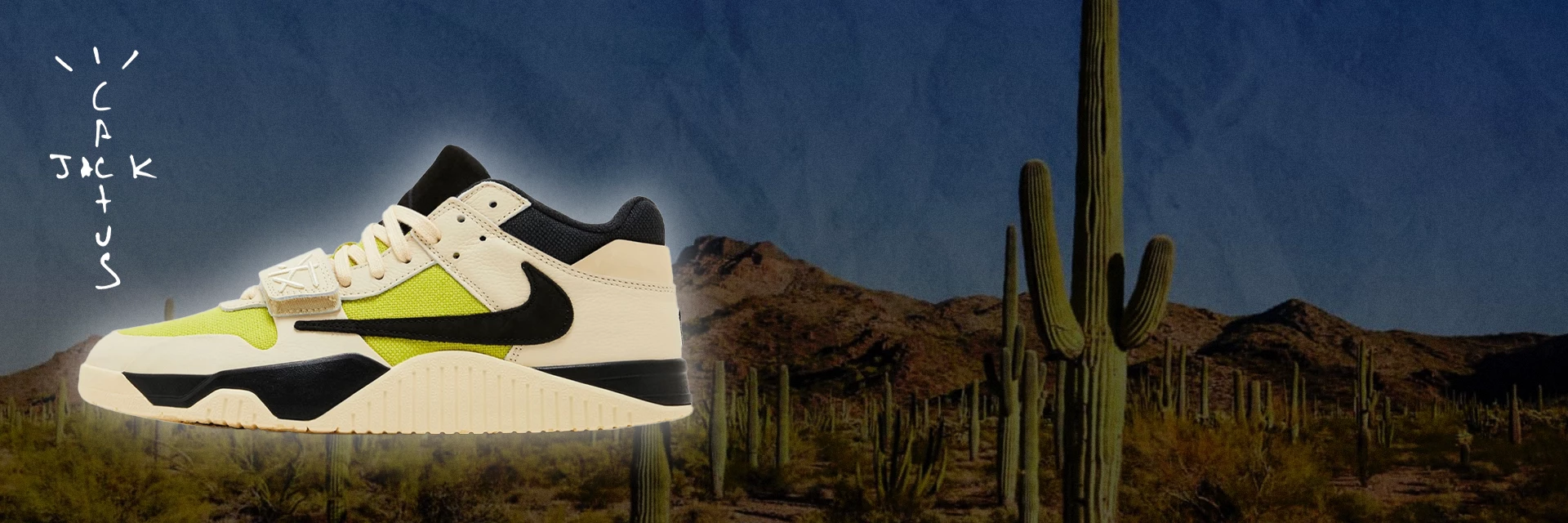
Air Jordan - brand of a legend
When we think of Nike, we think of sport. We think of all the countless professional players who have made the Swoosh famous. And we think of one particular basketball player who is partly responsible for the hype surrounding Air Jordan shoes.
But the hype goes much further than that, because the Air Jordan brand wasn't just bought or created by accident. It was founded FOR Michael Jordan when he was still at the beginning of his career. With a firm belief in a great career.
During his career on the court, not only Michael Jordan but also the brand behind him became an absolute legend - as befits the collaboration between the world's best basketball player and the most successful sports brand.
In this article, you can find out all about the origins of the famous sports brand from Nike, its greatest successes and, of course, the brand's most hyped models.
Business as unusual
The story of a happy coincidence
Nike's co-founder Phil Knight sensed that this was Nike's chance. He knew that the basketball player was important for Nike's future and was keen to sign him. But Jordan didn't want to sign at first; he couldn't do anything with the shoes. The deal seemed to be on the rocks, and Knight finally managed to convince him and win him over for Nike. Initially, the deal was ridiculed and no one even expected it to be successful. Contrary to expectations, Jordan and Nike managed to revolutionize the market together and create something completely new - a legend.
The hype
Until the early 1980s, Nike was not a big player in basketball - adidas and Converse successfully defended the throne. But Michael Jordan's stellar career also pushed the brand: it wasn't long before Nike secured the top spot on the court and relegated the competition to second place.
One reason for the hype was, of course, the special red and black colorway that was developed especially for the professional player. Black shoes were an absolute no-go in the NBA and were not part of the dress code. Nike was happy to accept the fines that Jordan collected every time he wore the shoes - because the media run was a real hit from a marketing point of view. Everyone was talking about the scandal, which gave the brand and the professional player a huge boost. The subsequent models were also in endless demand and the brand managed to produce one of the most popular sneakers in the world even after Jordan's active career ended. The Netflix documentary "The last dance" gave the hype surrounding Jordan sneakers another huge boost and ensured that the Jordan 1 was once again in high demand.
The collabos with the shoe are also impressive and are sometimes sold for huge sums online. Special models such as the Jordan 1 Off-White are over 20 times their original price and are real rarities among collectors. Every new release is eagerly anticipated and it is not uncommon for special editions to sell out in seconds. This strategy makes the sneakers all the more popular!
However, the hype surrounding the shoes is also due to the brand itself. Nike has achieved something completely unique that no other sporting goods manufacturer has managed before: the sports giant has succeeded in detaching the Jordans from the logo - the Swoosh - without losing the identification with the brand. The brand has achieved cult status through its connection to sport and the legend of Michael Jordan and - perhaps most importantly - created an emotional connection with its customers. The absolute supreme discipline!
Success
This is precisely the reason why the brand's hype did not simply end after Michael Jordan hung up his active career. An emotional connection to a brand creates trust, loyalty and a sense of belonging. No wonder the success of special models, regular releases or hyped collabos never stops.
The Jordan 2 already comes without the Swoosh and with the Jordan 3, Tinker Hatfield introduces the legendary Jumpman logo. In total, the designer was responsible for 21 Jordan models and played a key role in shaping the success of the design.
The shoes are also still represented on the court: Both the retros and new performance sneakers are appreciated by professional athletes such as Kawhi Leonard and Westbrook. But Nike is not only celebrating success with Air Jordan in basketball. As recently as 2018, the brand expanded its market and became the official outfitter of the Paris Saint-Germain soccer club. The Jumpman logo now also adorns the club's home jerseys.
For the 1992 Olympic Games, Air Jordan developed its own design and the success of the "Dream Team" around Michael Jordan also brought the shoes back into focus. The Air Jordan X, which came out at the temporary end of the player's career and bore his successes on the sole, also triggered a huge amount of hype. The Jordan 4 or Jordan 1 "Cactus Jack" also speak for the long-lasting success of the brand with the Jumpman logo.
The Jordans have also always celebrated great success with their collaborations. Special models such as those with Travis Scott are sold out within seconds and can only be obtained later for expensive money from resellers. The Jordan 1 Retro High, for example, sells for over €1,600 on StockX - and five-figure sums are not uncommon.
Models
The first silhouette, the Jordan 1, hit like a bomb. The black and red colorway alone created a lot of media hype and everyone wanted to get their hands on a pair of the banned kicks. And as it turned out over the years, the collaboration couldn't have gone better: Nike and Jordan pushed each other. The professional player had a stellar career on the court and every step of his career ladder was accompanied by a new pair of Air Jordan.
It was not uncommon for queues to form outside the stores when new Air Jordan styles were dropped. Of course, the OG colorways in which Jordan himself achieved his successes on the court are still particularly popular among sneakerheads and basketball fans. These are usually the Jordan 1 to 14, which have accompanied countless legendary basketball moments that everyone would like to add to their shoe cabinet. We will now introduce you to the most popular models.
Nike Air Jordan 1 Mid and Low
The Jordan 1 made sneaker history: this shoe marked the beginning of a collaboration between the sportswear brand Nike and professional basketball player Michael Jordan that is still going strong today and is probably one of the most successful ever. Both the Mid and the Jordan 1 Low versions impress with their sporty style and proven Nike technologies - such as Air cushioning and a robust sole for ideal grip.
While the Low version has always been popular for street style, the Mid version was long regarded as a cheap copy of the original High. However, since the highs are hard to come by, the mid version has been able to catch up and straighten out its image. Most Mids have a leather upper and feature the Jumpman logo on the tongue, which sets them apart from the Lows and Highs. With popular collabos and special colorways, they are now in no way inferior to the original!
Nike Air Jordan 4
One year after the launch of the Jordan 3, the AJ 4 was released in 1989 in four different colorways and was slightly lighter and narrower than its predecessor. The special thing about it: the sneaker was the first model from the sportswear brand to appear on the global market. Its success was helped by its appearance in a movie and the professional player himself: Jordan wore the AJ 4 "Bred" in a legendary play-off game in the year of its release - after which everyone wanted to get their hands on a copy of the new kicks.
The shoe has a waterproof exterior and a warm inner lining, making it the ideal shoe for colder days. The mesh and molded plastic elements made it a pioneer of its time. The colorways "Metallic Red", "Retro Black Cat" and the retro version "Cool Grey" are particularly popular. Of course, Nike also relied on major collabs for the Jordan 4, for example with Union LA or Levi's.
Air Jordan 6
The AJ 6 is and remains a very special silhouette for the brand - in many respects. After Michael Jordan switched to the NBA, victory was a long time coming. Then, in 1991, the basketball star and his team won their first NBA title, beating the Lakers - a milestone in his career and the first of a total of six championship titles. You can probably imagine which shoe he wore to this game - none other than the Air Jordan 6!
Tinker Hatfield took his cue from Jordan's penchant for sports cars for the first time with the AJ 6, thus deviating from the previous look. The dynamic-looking sole with its hard edges and elements such as the tab on the heel are reminiscent of the look of a sports car. Unnecessary padding was also dispensed with to make the shoe lighter and facilitate quick movements. Since 2002, the 6 Series has also been available as a low version and especially for women. New trendy colorways were added and a few years later, Air Jordan released the shoe in a completely retro design.
Uniqueness on point
In the world of sports, there are many very successful brands that have more than earned their place. However, Air Jordan is and remains an exception. Because a brand like this, which is packed with sweat, tears and lots of emotion, cannot simply be conceived on paper. It is lived. With every single muscle fiber.
The dynamism of Michael Jordan on the court is reflected in every single pair of Air Jordans and connects the emotions behind his sporting successes with the brand. This creates a sense of belonging that has never existed before. For a brand that is unique.
Knowledge

























